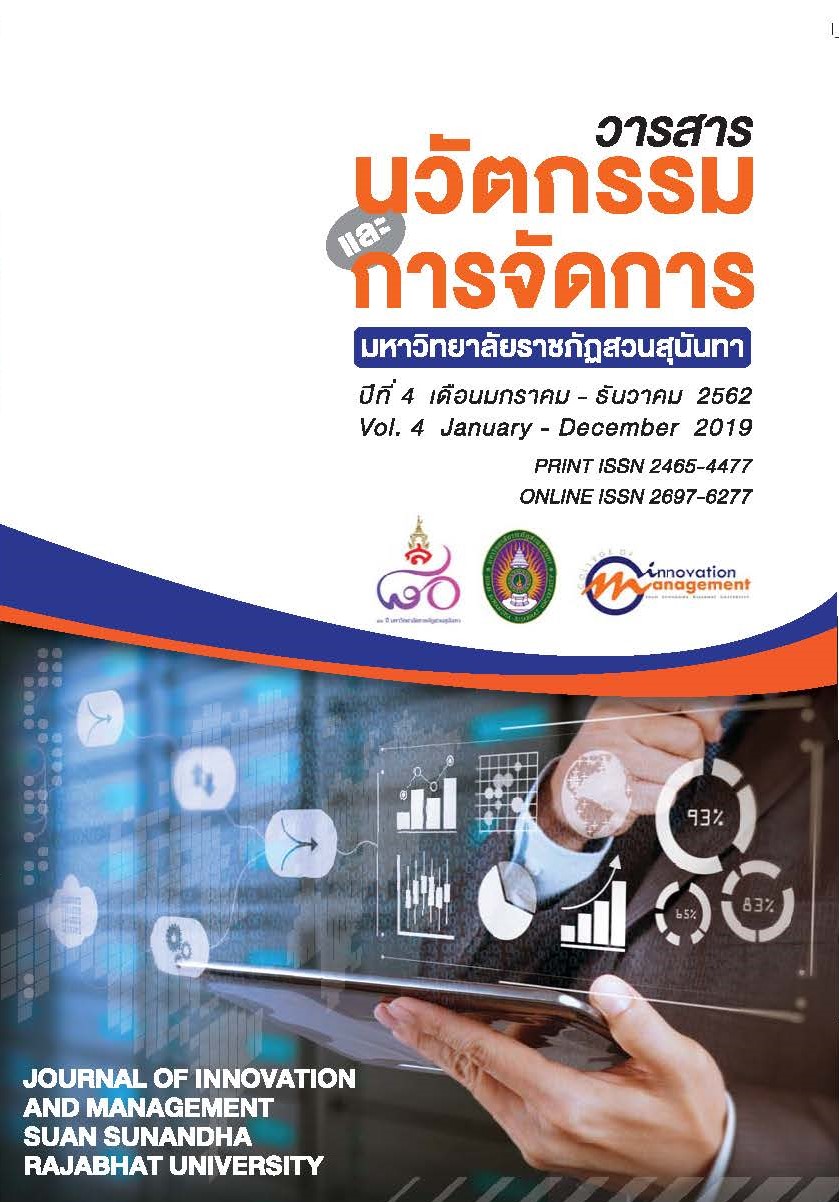The Design of Information Technology Pattern for Traceability to Increase Export Efficiency of Golden Banana
Keywords:
Information Technology, Traceability Export, Golden BananaAbstract
The traceability Is one of the reasons that increase the consumer’s confident of buying the product as the consumer is able to track the route of the product and also able to reduce the loss of the company in the cost of returning product by the company itself. The traceability has 2 main components which are tracking and tracing. As now there are so many technologies which can apply to the traceability process and increase the efficiency of the traceability which will elevate the export efficiency of the exporting of golden banana. So, the author decided to proceed and research on the design of information technology pattern for traceability to increase export efficiency of golden banana as the Thailand’s golden banana has a very high export potential especially for exporting to Japan. The author was studied the literature review and related theory and did the in-depth interview to identify the most suitable process and technology then design the information technology pattern for traceability to increase export efficiency of golden banana. The evaluation of the pattern was in a “Good” and “Appropriate.”
References
Exposito, I., Gay-Fernandez, J.A., and Cuinas, I. (2013). A Complete Traceability System for a Wine Supply Chain Using Radio-Frequency Identification and Wireless Sensor Networks. IEEE Antennas and Propagation Magazine, 55(2), 255-267.
Karlsen, K., Dreyer, B., Olsen, P., and Elvevoll, E. (2013). Literature review: Does a common theoretical framework to implement food traceability exist? Food Control, 32(2), 409–417.
Lavelli, V. (2013). High-warranty traceability system in the poultry meat supply chain: A medium-sized enterprise case study. Food Control, 33(1), 148-156.
Liao, P., Chang, H. and Chang, C. (2011). Why is the food traceability system unsuccessful in Taiwan? Empirical evidence from a national survey of fruit and vegetable farmers. Food Policy, 36(5), 686–693.
Olsen, P. and Borit, M. (2013). How to define traceability. Trends in Food Science & Technology, 29(2), 142–150.
Qian, J., Yang, X., Wu, X., Zhao, L., Fan, B. and Xing, B. (2012). A traceability system incorporating 2D barcode and RFID technology for wheat flour mills. Computers and Electronics in Agriculture, 89, 76–85.
Saltini, R. and Akkerman, R. (2012). Testing improvements in the chocolate traceability system: Impact on product recalls and production efficiency. Food Control, 23(1), 221–226.
Shakiba, M., Jit Singh, M. and Abdullah, M. (2015). Intelligent Items Traceability System – RFID vs QR. The Ingenieur, Jan, 73-76.
Tarjan, L., Šenk, I., Tegeltija, S., Stankovski, S. and Ostojic, G. (2014). A readability analysis for QR code application in a traceability system. Computers and Electronics in Agriculture, 109, 1–11.
Wang, Y., Yang, Y. and Gu, Y. (2012). Research on Quality and Safety Traceability System of Fruit and Vegetable Products Based on Ontology. Journal of Convergence Information Technology, 7(1), 86-93.
Yan, B., Shi, P. and Huang, G. (2012). Development of traceability system of aquatic foods supply chain based on RFID and EPC internet of things. Transactions of the Chinese Society of Agricultural Engineering, 29(15), 172-183.






